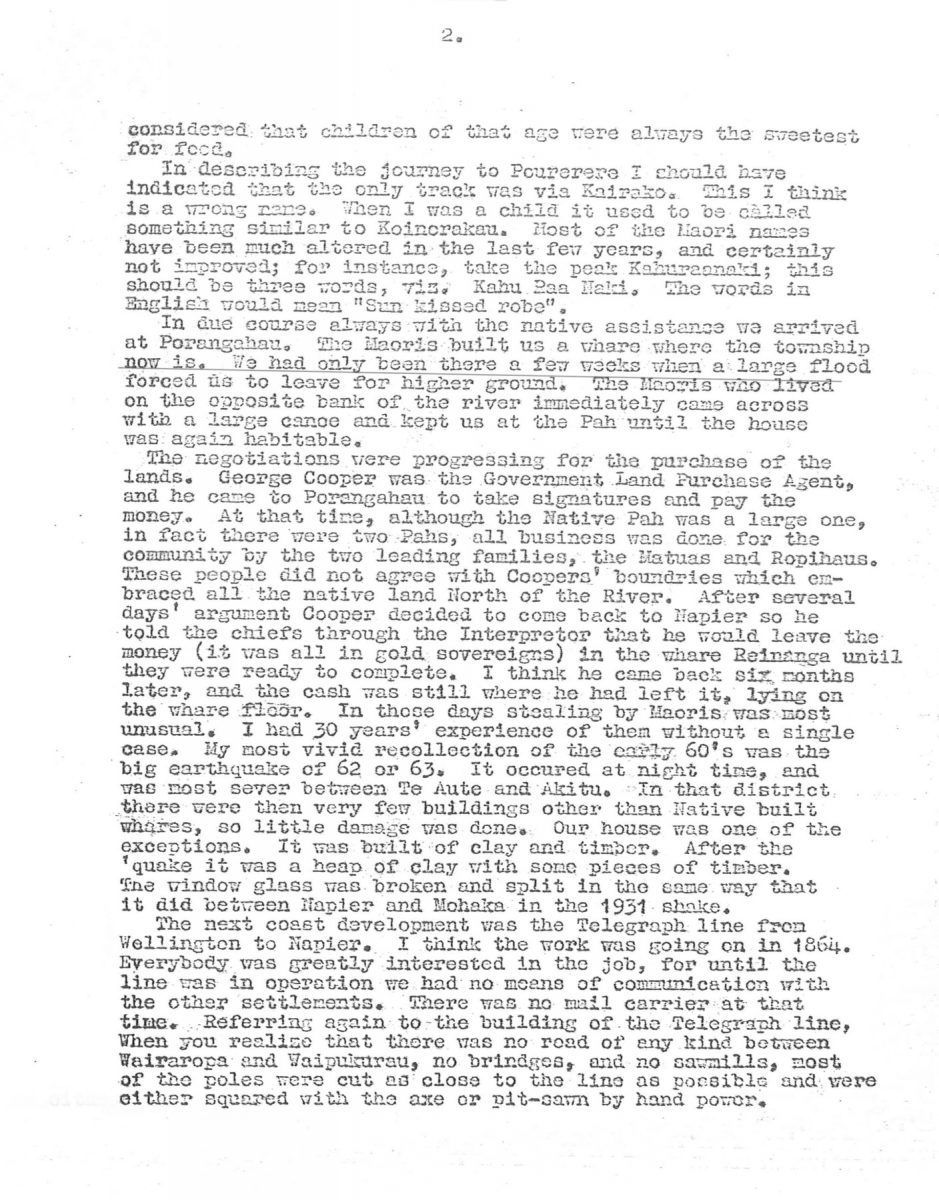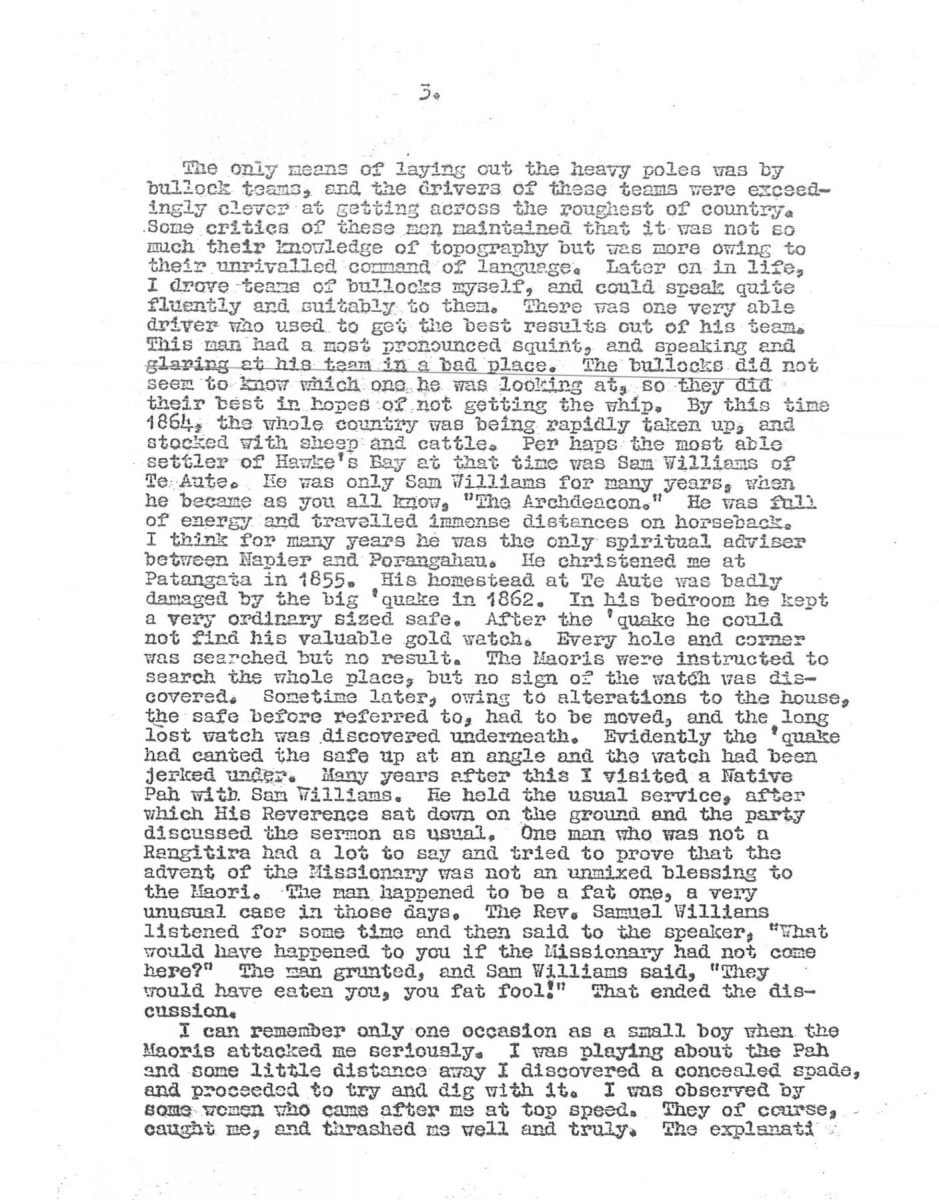Lecture by Mr. T. E. Crosse. 12th November, 1934.
“Reminiscences of Hawke’s Bay in the Early Days.”
My people came to Napier in 1854. Murvis was the only Hotel, and there were only about a dozen other houses. My father was looking for land but found it hard to get. He had letters to Spencer Civiling, Tekopanga, now called St. Lawrence at Patangata.
My family went by boat to Clive or rather to the Ngaruaroro [Ngaruroro] mouth. There was no road, the Maoris had agreed to take my family to Patangata. They guided them round the beach to the Tuki Tuki; a large canoe was ready and every one was taken to a Pah on the river side. I think His Lordship lives there now. The next step up the river was to another Maori settlement, I think the name was Ngawakatotara. I think the county council had some trouble a few years ago at the same place, because they broke into some old graves. The next stop was at Patangata. During the whole trip from Napier to Patangata the party were the guests of the Natives; few if any Pakehas were seen. The Natives did everything possible for the comfort of my people.
A lengthy stay was made at Patangata, and the natives allowed my parents to occupy one of their houses. Stores were a difficulty; pork and wheat could be obtained from the Maoris. These things were paid for by the exchange of as much tobacco.
During our early experience of the Natives no member of the party knew a word of Maori, and the Maoris knew no English. Above I referred to the purchase of wheat. This had to be ground into a rough kind of flour by the aid of a small hand turned mill. It was a common practice for a visitor to grind a certain quantity for flour as some recompense for the accommodation. It was said of one Oero settler that a notice board in front of the house bore the Legend “Grind or go on.”
After some months’ delay at Patangata we were advised to push on to Porangahau as the Government were buying that country shortly. We again had to secure the assistance of some Maori guides. The only means of locomotion between Patangata and Porangahau was to walk. I being an infant had to be carried. The first point we made for was Pourerere. A few sheep had been landed there by a Mr. Northwood. The run afterwards became the property of the Nairn Bros. From Pourerere we went along the Beach to a nice valley with a native Pah close to the sea; I forget the name, but the valley is now owned by P. S. Mc.Hardy. The chief man of the Pah got very fond of me. I think I was about seven months old. This old man offered my mother 1000 acres of land in exchange for me. I could never understand why she didn’t close the deal. The reason she gave was the old Rangatira had been looking for me over and found that I had just developed my first tooth. He remarked that in his younger days, he















Do you know something about this record?
Please note we cannot verify the accuracy of any information posted by the community.